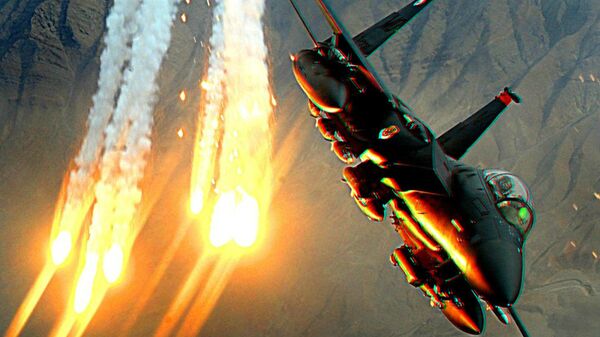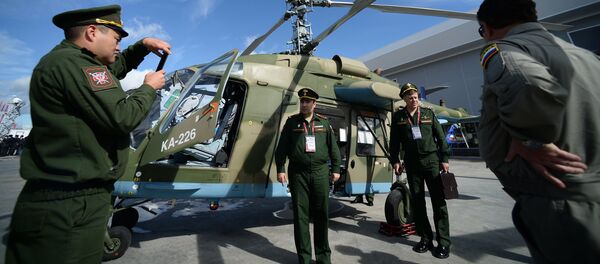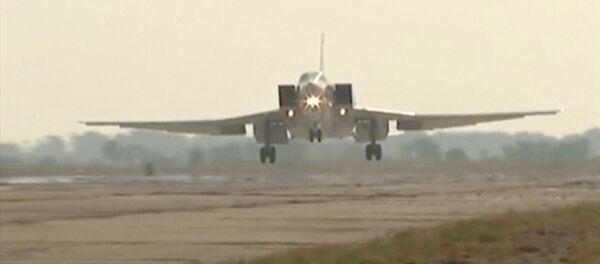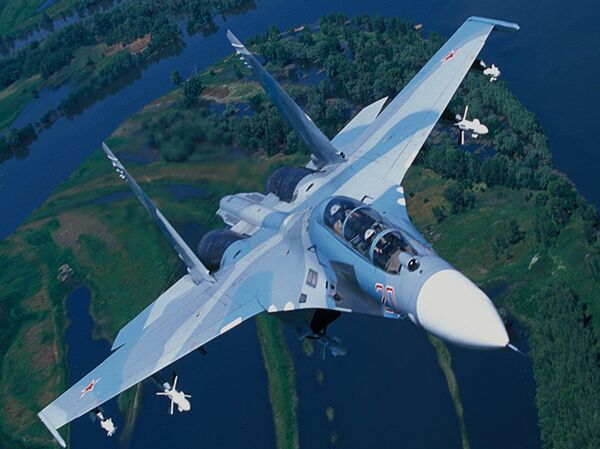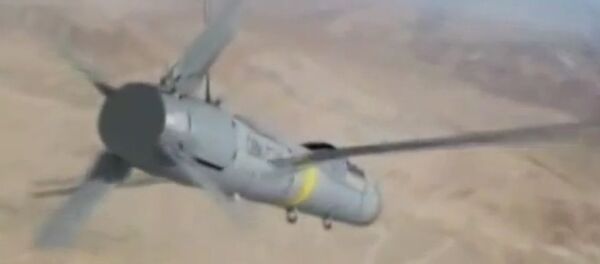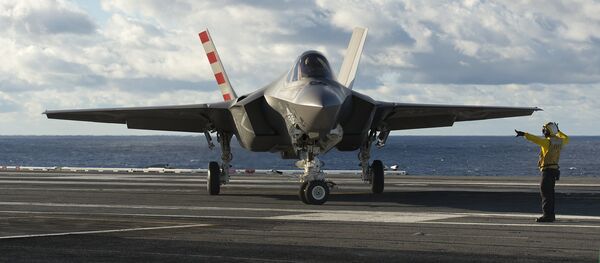Speaking to CNN last week, an Air Force representative said that the $12 billion upgrade to the F-15 4th generation air superiority fighters would cover 435 machines, equipping them with new radar, upgraded mission computers, advanced infrared search and track capabilities, electronic warfare defenses, and modernized communications, allowing them to work in coordination with other, more advanced aircraft.
Some of the aircraft will also see their missile capacity doubled from 8 to 16, according to Boeing.
Originally, the USAF's entire fleet of aging F-15s was meant to be scrapped, replaced by the 5th generation F-22 Raptor, which went into production in 2005. However, production of that aircraft was halted in 2009, with only 188 of the planned 749 F-22s produced.
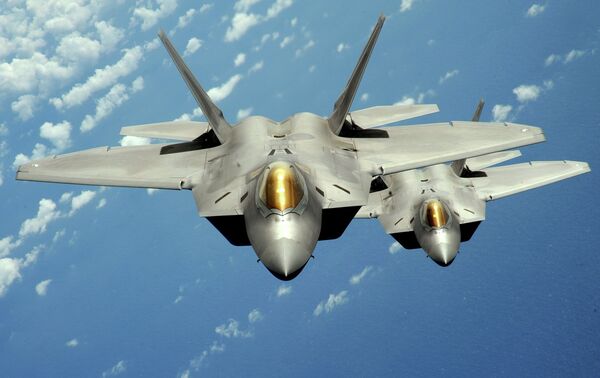
According to Defense News, the US now has a total of 1,971 fighter and attack aircraft (including the A-10, F-15, F-16, F-22 and F-35A), but needs at least 1,900, including training and reserve aircraft. Recently, the Pentagon has also voiced concerns about the reduction in the number of fighters in the Air Force's fleet, with retiring aircraft not finding appropriate replacements, from the F-22, whose production has stopped, to the F-35, which is behind schedule by 6 years.
Commenting on the Defense Department's decision to upgrade the new planes, Russian military experts speaking to the independent online newspaper Svobodnaya Pressa admitted that the DoD's decision, while forced, may have actually led them to stumble onto the best possible option.
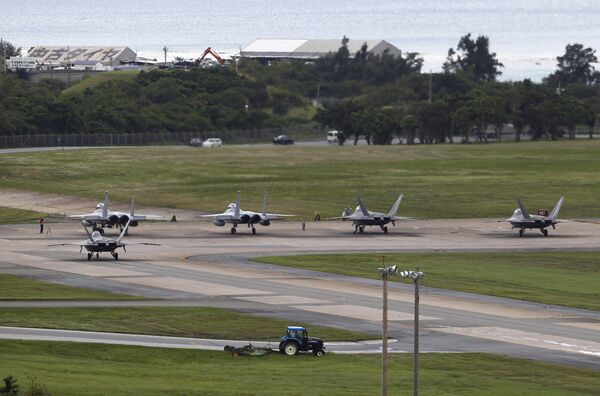
The F-15, the paper recalled, "was the first 4th generation fighter aircraft to enter service in the US Air Force…The aircraft has seen two modernization efforts through the first several decades of its operation, resulting in the modifications F15C and F-15E (the latter carrying tactical nukes). These planes were in turn upgraded in 2007; like today, the decision was motivated at the time by delays in the F-35 program. Since then, as we have seen, not much has changed. USAF Command announced the readiness of the first batch of its fifth gen F-35 Lightening II only last month."
Therefore, Svobodnaya Pressa noted, "the question arises: to what degree will the [upgraded] F-15s be able to comply with the requirements of modern air combat between 2024 and 2040? And will they be able to match Russia's air forces?"
"But if we analyze the findings of foreign experts, we can conclude that modernized combat platform of a 3rd generation aircraft has a combat effectiveness that is nearly as good as a non-upgraded 4th generation plane. That is, the radar field of more modern fighters can be easily be broken by fighters from earlier generations equipped with modern radar, electronic warfare systems, etc."
Accordingly, Gorbenko noted, since the F-15 has "a good engine and airframe, in the future it can receive upgraded avionics and weapons systems whose production is not even at the planning stages today."
Ultimately, the officer emphasized that "an aircraft's airframe can last for a very long time; the problem is always rooted either in the engine or in the internals. But if engine life allows it, the installation of new electronics can make for a relatively modern aircraft. In air combat, the airframe generally plays an indirect role; the main thing is for the aircraft to detect [enemy] planes at long range, to track them and attack."
Accordingly, Karyakin noted, making prudent upgrades to existing planes is definitely a better strategy than creating extravagent new ones. "The modernization of time-tested and proven aircraft is an American trend. For example, in 2015, the Pentagon announced the return of the supersonic B-1B Lancer bomber to the USAF's Global Command. And Boeing has received an order to further modernize not just the B-1Bs (which entered service in the USAF in 1985) but also the B-52 strategic bombers (which have been serving since 1955), to bring them into compliance with the 'digital age'."
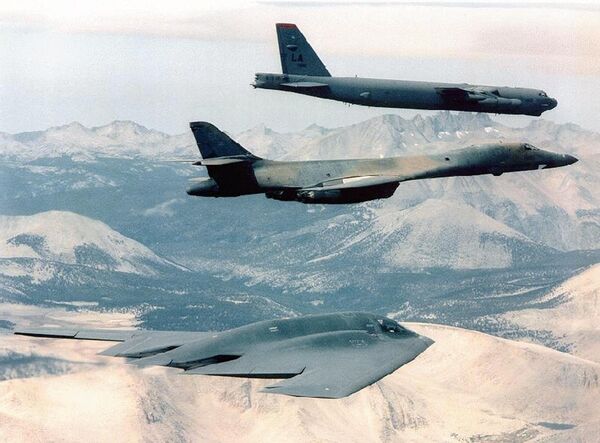
Therefore, the retired Russian colonel explained, "the modernization of the 4th gen fighter is a reasonable approach to operating the USAF's fleet; and it's not just about the price, or problems with 5th gen planes. As practice has shown, it's not so simple to transplant flight crew to new types of aircraft. According to some estimates, doing so results in a 40% loss in combat effectiveness until pilots can get used to their new vehicles."
"There are even signs that USAF command is interested in equipping its 4th and 5th generation F-15s and F-22s with flights of drones. In this way, the combat capabilities of the machines would increase further."
Meanwhile, Andrei Frolov, editor in chief of Russia's Arms Export Magazine, also suggested that upgrading the USAF's fleet of F-15Cs would be a prudent move, since replacing its fleet of these aircraft with 5th gen planes would effectively bankrupt the country's budget. "This is especially so given that in some combat scenarios, F-22s and F-35s are simply overkill – for example, in instances of establishing air superiority in countries which do not have well-developed air and air defense systems."
Moreover, according to Frolov, the upgraded F-15s are will be more than capable of fulfilling the duty of defending America's administrative and economic infrastructure inside the country's borders.

Finally, retired colonel Mikhail Khodarenok, former chief of the 1st Main Operations Directorate of the Russian General Staff, emphasized that he believed the Pentagon's decision on the F-15s was based in part on the fact that Russian radar technology has effectively rendered America's 'stealth' efforts obsolete.
"Therefore, if the airframe and engine allow it, the modernization of the F-15 is probably justified. In modern air combat, the result is decided by the plane's onboard avionics equipment," the officer concluded.

